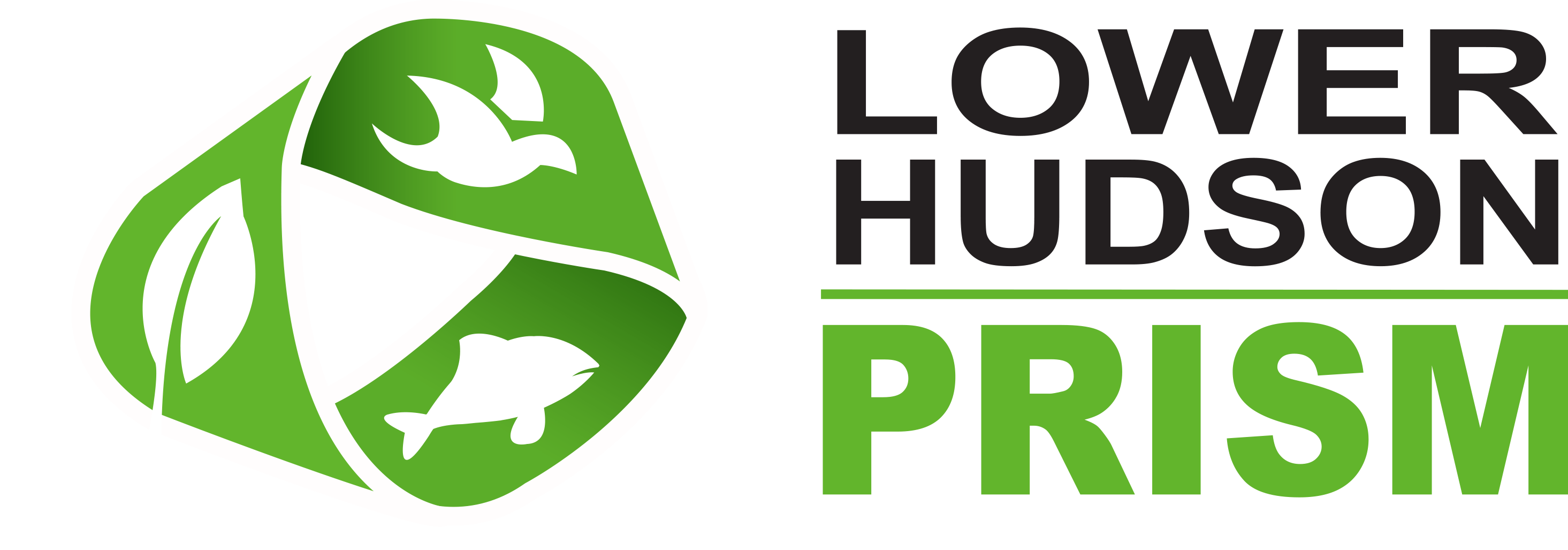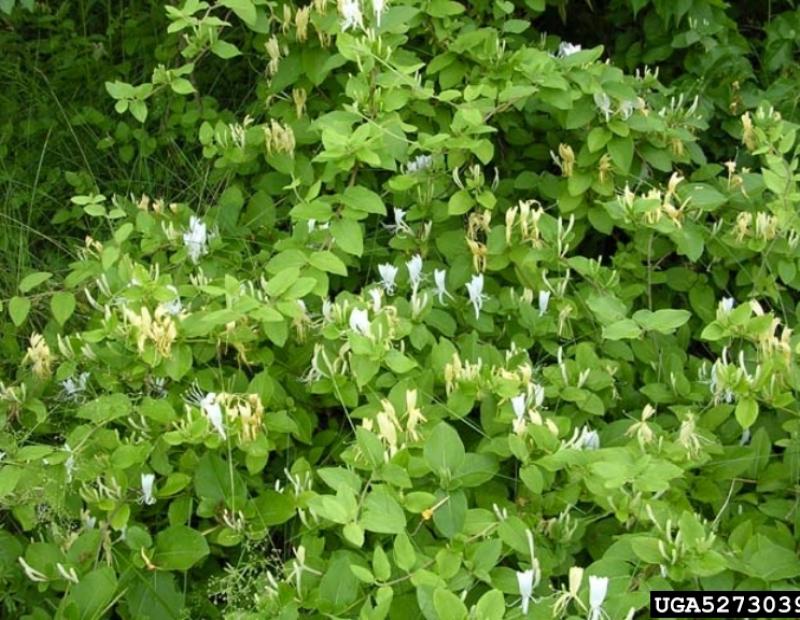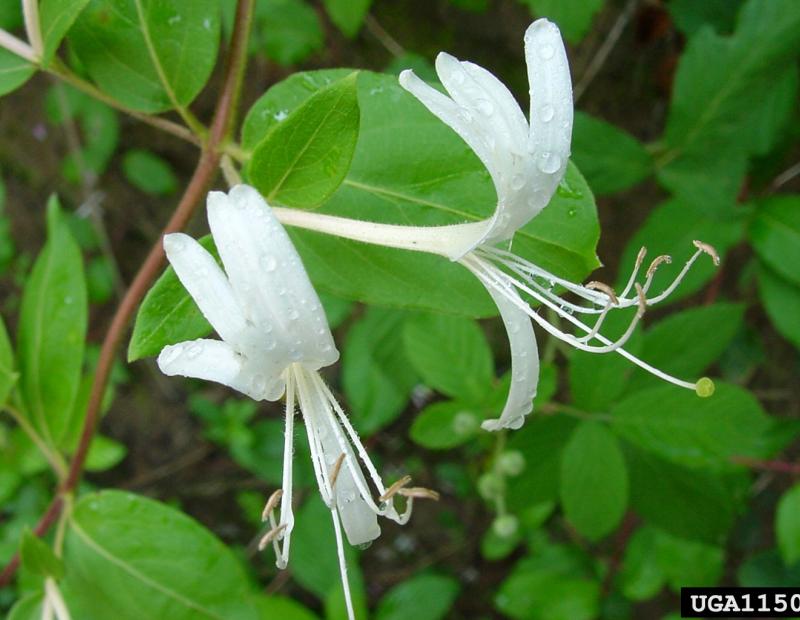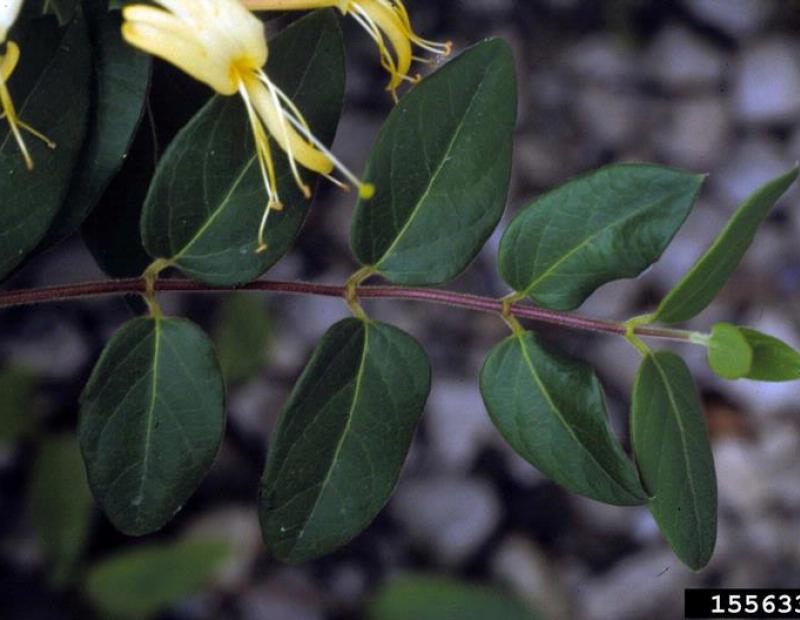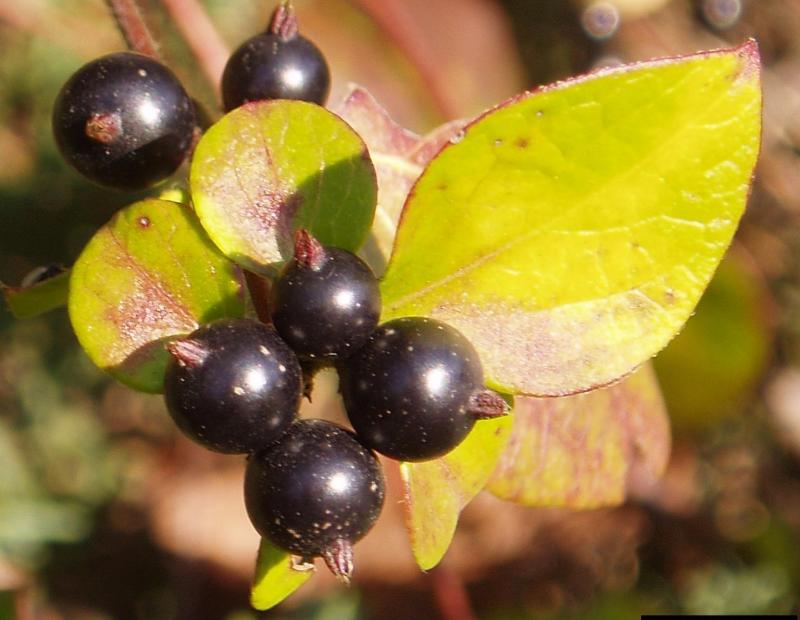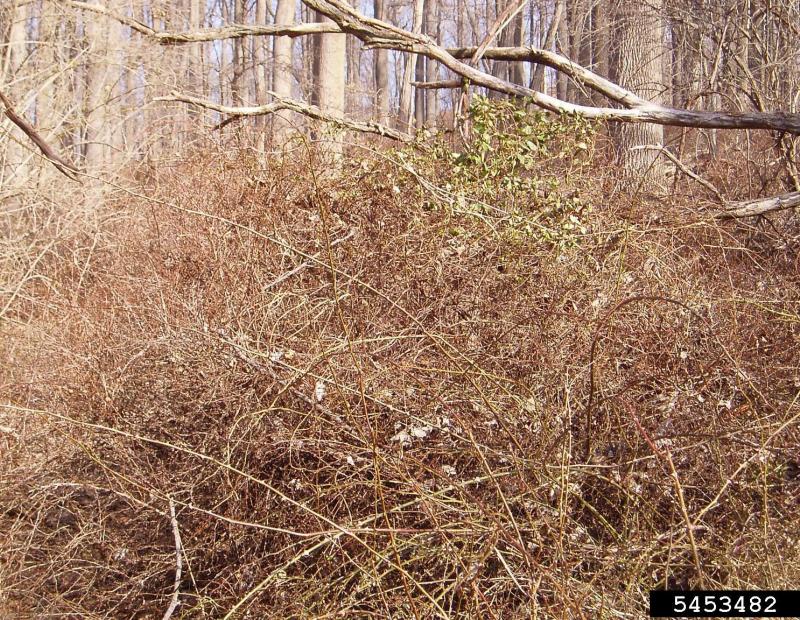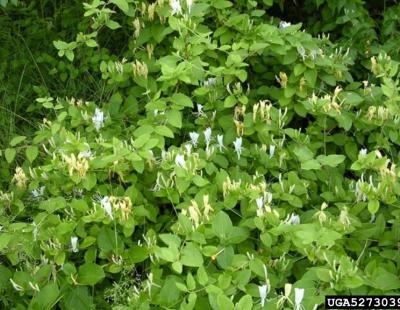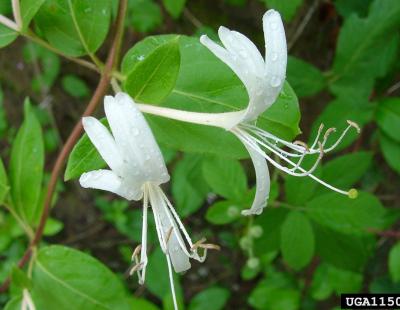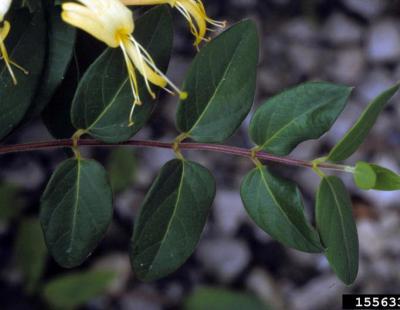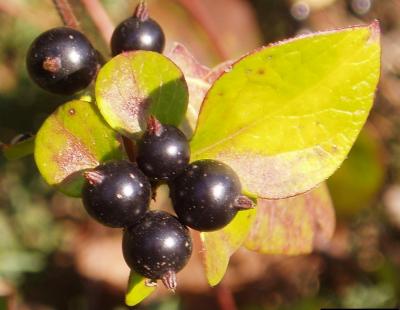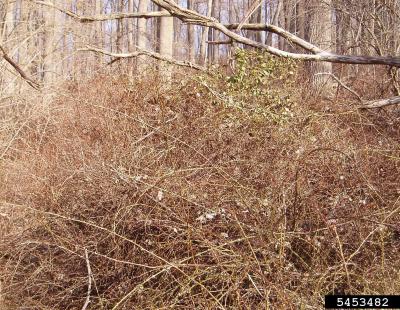Vertical Tabs
Japanese honeysuckle is a member of the Honeysuckle family (Caprifoliaceae). It is a perennial, woody vine that can grow to be 30 feet long. Japanese honeysuckle is most easily identified in early summer when fragrant clusters of gold to yellow to creamy white trumpets bloom (5). These flowers are generally borne in pairs along the leaf axils. Leaves are alternately arranged, highly variable in shape, dark green and generally glossy on the surface. Leaf margins vary from coarsely serrate to deeply lobed and serrate. Japanese honeysuckle’s fruit is a small dark purple to black berry. (5)
Japanese honeysuckle is an aggressive, woody vine that can cover understory shrubs and ascend into the canopy— although this is more commonly seen further south. As a ground cover, this species is capable of smothering seedling trees and other herbaceous plants, preventing germination and displacing native vegetation. The homogenous understory Japanese honeysuckle forms can drastically alter forest bird communities. (6)
Biological Control
There is currently no single optimal biological control agent in use against this species. (4)
Manual or Mechanical Control
Pulling / Digging Up: Pulling by hand is an effective method of control for seedlings and small plants as long as all the root is extracted from the soil. For larger plants, this is an inadvisable technique as root fragmentation can encourage re-sprouting. (5)
Mowing: While mowing will limit the length of Japanese honeysuckle’s vines, it will encourage further sprouting, increasing the total number of runners present. (7)
Girdling: Not applicable
Prescribed Fire: Consistent, low-grade wildfires appear capable of excluding Japanese honeysuckle from the target habitat. However, sporadic fires will not kill the vine, which sprouts readily from roots or stems buried in leaf litter or soil (4)
Prescribed Grazing: Not applicable
Soil Tilling: Not advisable. Tilling may fragment roots and encourage re-sprouting.
Mulching: Not applicable
Solarization: Not applicable
Hot Foam Spray: Not applicable
Chemical Control
The pesticide application rates and usage herein are recommendations based on research and interviews with land managers. When considering the use of pesticides, it is your responsibility to fully understand the laws, regulations and best practices required to apply pesticides in a responsible manner. At times, the pest you seek to treat may not be on a pesticide label, requiring a 2ee exemption from NYSDEC. Always thoroughly read the label of any pesticide and consult the NYSDEC or a licensed pesticide applicator with questions.
Foliar Spray: A 2-3% solution of glyphosate is effective at managing Japanese honeysuckle, although a repeat application will likely be necessary. Infestations managed in this way should be revisited in 2-3 weeks to monitor for regrowth. Always read and follow all instructions on the herbicide label. (7)
Cut Stump: Not applicable
Basal Bark: No information available
Hack-And-Squirt
Stem Injection: Not applicable
Pre-Emergent Spray: Not applicable
General management overview and recommendation
As with any other invasive infestation complex, large stands of Japanese honeysuckle are best managed via a combination of mechanical and chemical means. Spring wildfires or sequential mowing followed by foliar spray of the vegetation that re-sprouts will likely give the most complete control. Managed infestations should be monitored for at least three years to ensure exhaustion of the short-lived seed bank (8). Any new seedlings can be hand pulled. (7)
Post treatment monitoring
Any infestations managed by chemical means must be revisited in 2-3 weeks to check for treatment efficacy. Although the species does not appear capable of forming long-term seed banks, treated populations should be revisited for at least three years to ensure no new seedlings have germinated (8).
Disposal Methods
Waste material can be crushed, chipped, burned or composted so long as management was completed prior to seed set. Any fruit must be bagged and disposed of, and any roots thoroughly crushed or dried.
REFERENCES
- https://www.dec.ny.gov/docs/lands_forests_pdf/isprohibitedplants2.pdf
- https://www.eddmaps.org/ipane/ipanespecies/vines/Lonicera_japonica.htm
- http://www.nyis.info/index.php?action=invasive_detail&id=44
- https://www.fs.fed.us/database/feis/plants/vine/lonjap/all.html
- https://gobotany.newenglandwild.org/species/lonicera/japonica/
- https://www.cabi.org/isc/datasheet/31191
- https://mdc.mo.gov/trees-plants/problem-plant-control/invasive-plants/ja...
- http://trace.tennessee.edu/cgi/viewcontent.cgi?article=3122&context=utk_...
